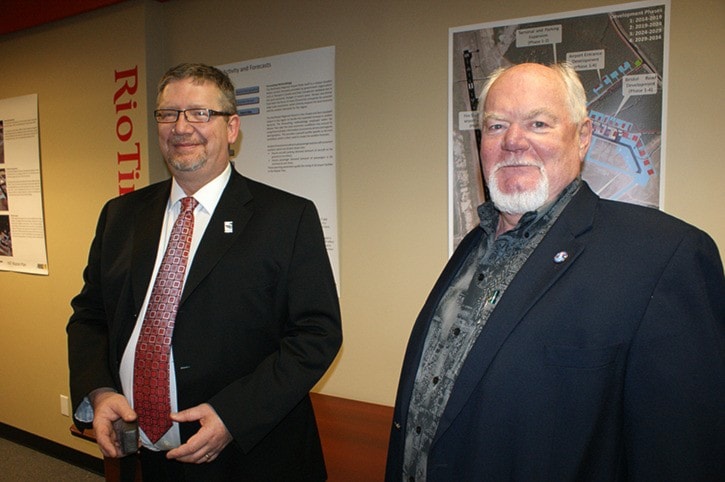The airport’s oftentimes crowded pre-boarding waiting area and backed up security line will be two of the first things to improve based on the outline for work contained in the Northwest Regional Airport’s 20-year master plan released Jan. 28.
“We’ve got a good, solid plan to work towards now,” said airport society president Ron Burnett at the master plan open house held at the airport, noting the necessity of a document like this to get ahead projected demands for the airport’s services.
Short-term priorities include improvements to the terminal building – more space at the check-in counters and pre-boarding waiting area, expanded security and baggage holding – public parking lots, and development to the main apron to provide space for larger aircraft.
Long-term priorities include lighting and electrical upgrades, the development of an airport fire station, restaurant and office expansion, development of Canadian Border Services Agency facilities (contingent upon getting that service), new parking lots, a commercial development area, a light industrial area, and developing the area where the airport’s entrance intersects with Hwy37.
Kerr Lammie, from Airbiz, the consulting firm which wrote the plan after speaking with local governments, regional districts and chambers of commerce, said the plan was built “based on reasonable, conservative forecasts.”
Those forecasts show that strong demand will continue in the short-term – last year, the airport saw 177,600 passengers, a 28 per cent increase from 2012 – and surpass 250,000 passengers in the next five years.
That forecast is built on current and anticipated development of industrial projects.
The forecast in the guide will “give the airport something to track against, act as a guideline,” Lammie said, while not completely tying the airport’s hands to development needs that may shift in the coming years.
That’s because the plan is intended to be a “living document” – a touchstone for future development at the airport consistent with the needs of the community, but regularly updated and flexible enough to allow changes depending on what does, or doesn’t, happen in the region going into the future.
The airport should see flexibility with its plans for commercial expansion east of the terminal to the existing lots on Bristol Road, providing space for private operations and fixed base operators.
For example, a company that is regularly flying out workers to an operations camp could lease a building and use that as a base – providing their own security and operations staff – while their project is underway, easing some of the strain on the main terminal.
The airport would still receive the passenger fee, but costs would be lower, and once the project is over and the lease is up, the airport can rent to someone else or develop it into something new – the terminal grows to support local demand, and the commercial area grows to support industry.
And with the economic growth in the area, Lammie said he won’t be surprised if some of the proposed changes happen soon.
“With investments it will start to take shape really quick,” he said.
